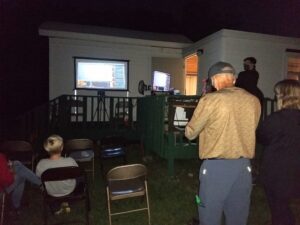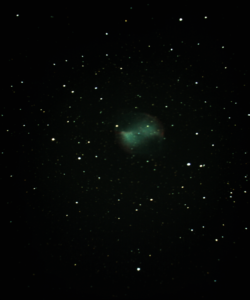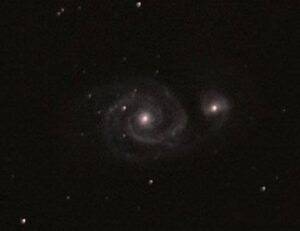Traditional visual astronomy is an undoubtedly joyous thing. It’s those first looks at the cloud belts of Jupiter, the rings of Saturn and the stunning cores of globular clusters that hooked us on this hobby to begin with. If you have enough aperture (your telescope is big enough), you can even catch some “faint fuzzies” … galaxies. Unfortunately for us (and the interested public), those “fuzzies” are exactly that… featureless grey smudges that don’t resemble anything let alone galaxies. But alas, aperture is expensive, time consuming, difficult to set up and difficult to maintain and, before you realize it, your joyous hobby starts to feel more like work. Once this realization sets in, all but the most passionate of amateur astronomers usually begin to lose interest.

Beyond the problem of aperture, there are many other problems facing the modern amateur astronomer. Light pollution is gradually making most suburban locations almost unusable for visual observation of anything but the moon & planets. The move from sodium-vapor streetlights to LED lighting is making a bad problem worse. Add to that the rarity of clear nights in general, our aging bodies (I shudder to think of what the average age of our board members might be. I just turned 50 and I’m probably bringing the average down), our deteriorating eyesight, our busy schedules, and the challenges presented by a Pandemic and our hobby is looking impractical at best and impossible at worst.
How can we overcome these problems?

If you’ve been attending our observing events at Darling Hill Observatory lately, you may have noticed a curious new trend. There aren’t as many people looking through eyepieces in the traditional way anymore. The nature of observational astronomy is starting to shift from traditional astronomy where people use their eyeballs to look at celestial objects to something that more resembles a curious combination of astronomy, photography and computer geekery. It’s called “Electronically Assisted Astronomy” or “EAA” for short.
There’s been some debate about the name “EAA”. Some people think that EAA is too vague a description for what is, at its core, still visual astronomy. After all, any telescope that requires power to operate can be fairly described as “electronically assisted”. If I had my way, I’d probably refer to it as EVA – Enhanced visual astronomy. The enhancement part of that is basically substituting a camera for your eyeball. But… wait a minute… Isn’t that just astrophotography?
Well… Not really.
Traditional astrophotography is more art than science. Astrophotographers typically use high-end refracting telescopes and very expensive, very accurate mounts to make long, guided exposures of their targets. Then, after a long night of capturing data, they spend time using software to manipulate the images to produce the (admittedly gorgeous) results. Even though Astrophotographers produce hands down better images than can be produced by EAA, they work a lot harder for them and the process they go through isn’t really conducive to public events where people are standing around waiting to see objects.
Given that our eyeballs have evolved for survival and not necessarily for picking out dust lanes in galaxies, the goal of EAA is to produce an enhanced image… one that shows clear detail, structure, and color… in the shortest possible time frame. This is achieved using a high-speed, usually CMOS-based camera in place of the eyepiece to take a series of short exposures and a computer to gather them together and “stack” (combine) them into a pleasing image that reveals far more detail than can be discerned visually. Typical images produced using this EAA technique take only minutes and require little if any processing.
Intrigued?
But wait… there’s more.

EAA, if you do it right, also has a tantalizing ability to overcome the light pollution difficulties inherent in observing from suburban locations. I’ve read on many forums that people who are proficient in EAA can observe detail in 15th & 16th magnitude galaxies from their own light-polluted backyards! There are numerous other advantages, too. In the time it takes the astrophotographers to gather data for perhaps 2 or 3 targets, the EAA observer can hit a dozen or more targets and instantly produce satisfying images of them in the same time frame while people wait.
Think about that for a minute.
Being an amateur astronomer in central New York requires a certain amount of flexibility. We may only have a few hours of clear skies in a month to observe. Doesn’t it make sense to use whatever little time you have efficiently?
